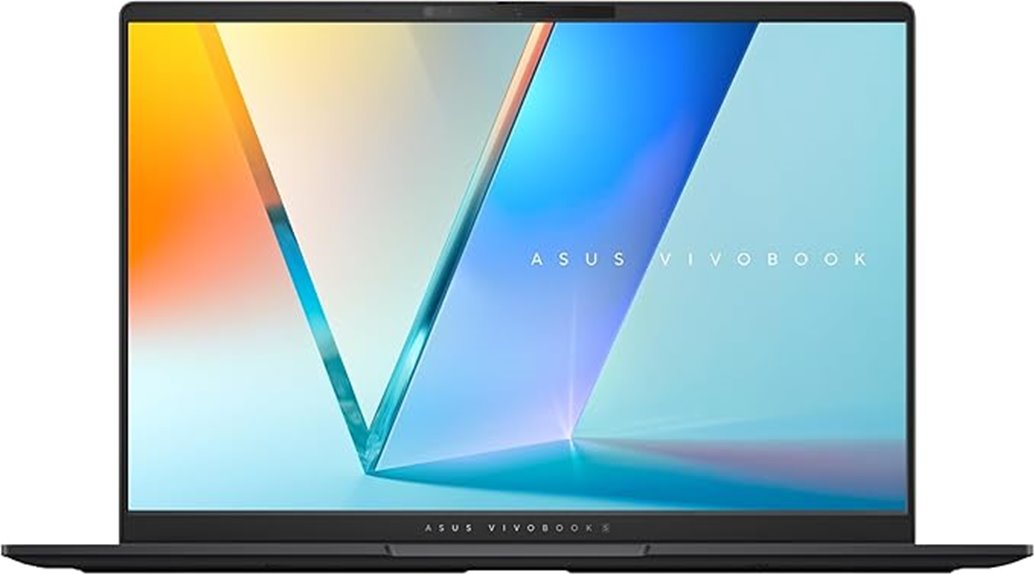Best Laptop for Data Science (Top 5 Picks for 2025)
When searching for the best laptops for data science in 2025, you should focus on performance, memory capacity, and display quality. Look for options like the Apple 2024 MacBook Pro with the M4 chip, and the Acer Swift X 14, which offer powerful processing capabilities. You’ll want at least 16GB of RAM, high-resolution displays, and excellent battery life to keep your workflow seamless. Stay tuned to discover more top choices tailored to your data science needs.
Key Takeaways
- Look for laptops with at least 32GB RAM to efficiently handle large datasets and support demanding data science tasks.
- High-resolution displays (3K or 4K) enhance data visualization and analysis, making them essential for data scientists.
- Ensure battery life ranges from 8 to 18 hours to maintain productivity during extended work sessions without interruptions.
- Prioritize laptops with multiple USB ports and Thunderbolt 4 for versatile connectivity with peripherals and high-speed data transfers.
- Choose models featuring integrated AI capabilities in CPUs/GPUs to boost performance in data processing and machine learning applications.
In the interest of full disclosure, we would like to inform you that some links on our website are affiliate links. By clicking on these links and completing a purchase from our partners, we may receive a nominal commission at no extra cost to you. Rest assured, our affiliate partnerships do not compromise the integrity of our editorial content or product evaluations. For further clarification, kindly refer to our comprehensive affiliate disclosure.
Table of Contents
What Are the Best Laptop for Data Science to Buy This Year?
Here are my top picks for the best laptop for data science to purchase this year.
1. Apple MacBook Pro Laptop with M4 chip
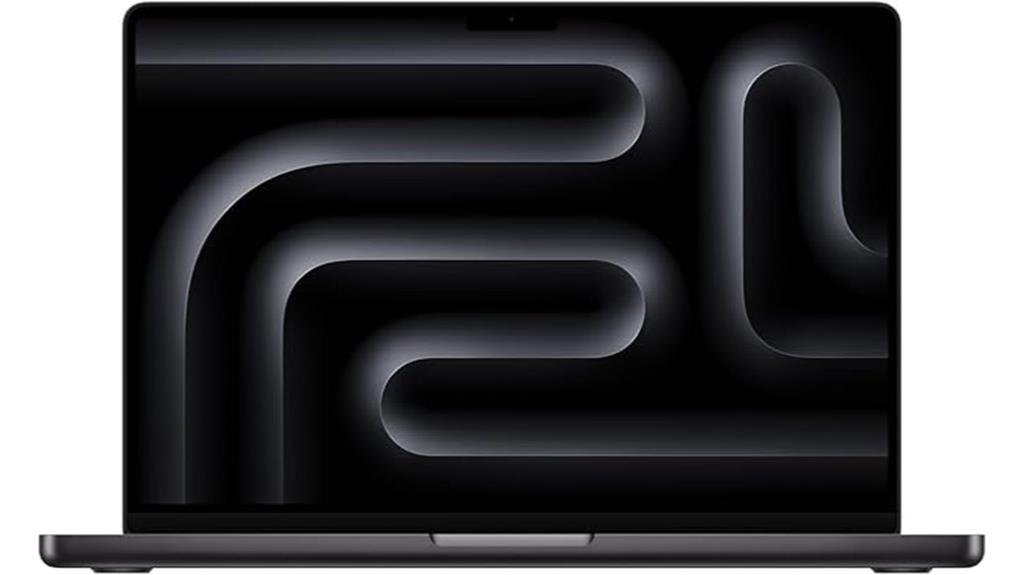
If you’re a data scientist looking for a powerful and reliable laptop in 2025, the Apple 2024 MacBook Pro with the M4 chip is an excellent choice. With its 10-core CPU and GPU, this laptop handles multitasking and demanding applications with ease. The stunning 14.2-inch Liquid Retina XDR display boasts a peak brightness of 1600 nits, ensuring your visuals are vibrant and clear. You’ll enjoy seamless integration with other Apple devices, enhancing your productivity with features like iPhone Mirroring and FaceTime. Plus, the all-day battery life means you can work confidently, whether plugged in or on the go.
Best For: Data scientists and professionals who require a powerful, reliable laptop for multitasking and demanding applications.
Pros:
- Exceptional performance with a 10-core CPU and GPU for efficient multitasking.
- Stunning 14.2-inch Liquid Retina XDR display with vibrant visuals and high brightness.
- Seamless integration with the Apple ecosystem, enhancing productivity with features like iPhone Mirroring.
Cons:
- Higher price point may not be suitable for budget-conscious users.
- Limited upgrade options for RAM and storage compared to some competitors.
- macOS may not be compatible with all specialized software used in data science.
2. Acer Swift X 14 Laptop (SFX14-72G-77NJ)
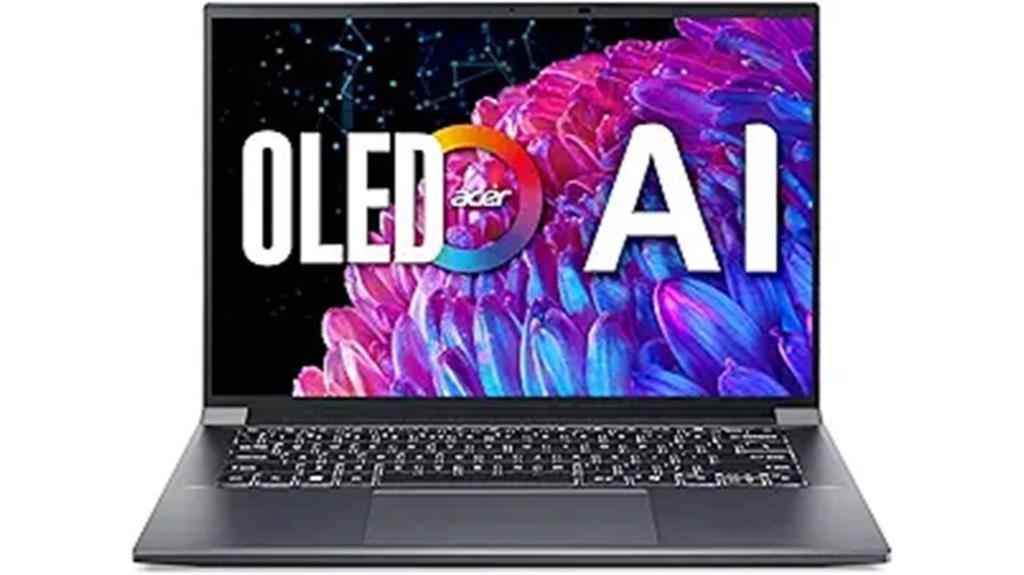
The Acer Swift X 14 Laptop (SFX14-72G-77NJ) stands out as an exceptional choice for data scientists seeking powerful performance in a portable design. With its Intel Core Ultra 7 processor and NVIDIA GeForce RTX 4060, it handles demanding applications effortlessly. The stunning 14.5-inch OLED display delivers vibrant visuals, while TÜV Rheinland certification helps reduce eye strain. You’ll appreciate the 16GB of memory and 1TB SSD for fast multitasking. Plus, the AI features, like the dedicated Copilot Key, enhance your workflow. With advanced connectivity options, including Wi-Fi 6E, this laptop ensures you’re always connected and productive.
Best For: Data scientists and creative professionals seeking a powerful, portable laptop with advanced AI capabilities and a stunning display.
Pros:
- Exceptional performance with Intel Core Ultra 7 and NVIDIA GeForce RTX 4060 for demanding applications.
- Beautiful 14.5-inch OLED display with high resolution and TÜV Rheinland certification for reduced eye strain.
- Ample memory and storage with 16GB RAM and 1TB SSD, plus advanced connectivity options like Wi-Fi 6E.
Cons:
- The 14.5-inch size may feel small for users who prefer larger screens for multitasking.
- The laptop may be pricier compared to non-gaming laptops with similar specifications.
- Battery life may be impacted during intensive tasks due to high-performance components.
3. Apple 2025 MacBook Air 15-inch Laptop
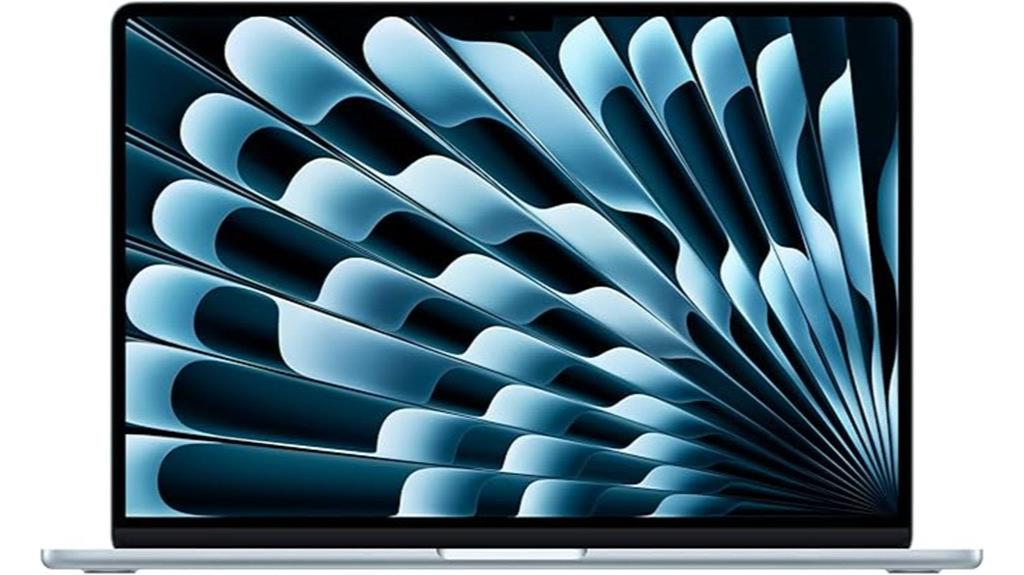
For data scientists seeking a powerful yet portable machine, the 2025 MacBook Air 15-inch Laptop stands out with its M4 chip, delivering exceptional speed for multitasking and complex computations. You’ll enjoy up to 18 hours of battery life, ensuring peak performance whether you’re plugged in or on the go. The stunning 15.3-inch Liquid Retina display showcases 1 billion colors, perfect for analyzing data visuals. Enhanced with a 12MP Center Stage camera and Spatial Audio, your video calls will be crystal clear. Plus, with robust connectivity options, including Thunderbolt 4 and Wi-Fi 6E, you’re set for any data science task ahead.
Best For: Data scientists and professionals seeking a powerful, portable laptop for complex computations and multitasking.
Pros:
- Exceptional performance with the M4 chip for fluid multitasking and video editing.
- Stunning 15.3-inch Liquid Retina display with vibrant color support for detailed data visualization.
- Long battery life of up to 18 hours, ideal for working on the go.
Cons:
- Limited to two Thunderbolt 4 ports, which may restrict connectivity options for some users.
- The 15-inch size may be less portable compared to smaller laptops.
- Higher price point compared to other laptops with similar specifications.
4. ASUS Vivobook S 14 OLED Slim Laptop (M5406WA-DS76)
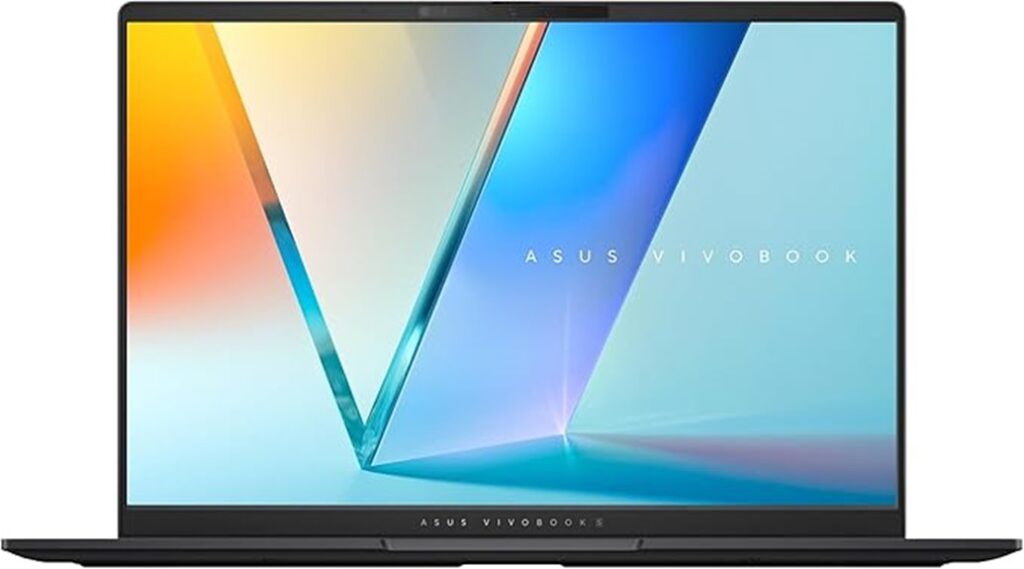
Designed for data scientists who demand high performance and stunning visuals, the ASUS Vivobook S 14 OLED Slim Laptop (M5406WA-DS76) stands out with its AMD Ryzen 9 365 processor, delivering exceptional processing power. With 24GB LPDDR5X RAM and a 512GB SSD, you’ll experience seamless multitasking and ample storage for your projects. The 14” 3K OLED display offers vibrant colors and sharp details, making data visualization a breeze. Weighing just 2.87 lbs and measuring only 0.63” thick, it’s highly portable. Plus, customizable RGB backlighting enhances your typing experience, ensuring you work comfortably anytime, anywhere.
Best For: Data scientists seeking high performance and stunning visuals in a portable laptop.
Pros:
- Exceptional processing power with AMD Ryzen 9 365 and 24GB RAM for seamless multitasking.
- Vibrant 14” 3K OLED display with 100% DCI-P3 color gamut for accurate data visualization.
- Lightweight and slim design makes it easy to carry for on-the-go productivity.
Cons:
- Limited storage capacity with only 512GB SSD, which may not suffice for large datasets.
- The RGB backlighting may not appeal to all users and could be considered gimmicky.
- Higher price point compared to other laptops with similar specifications.
5. Samsung Galaxy Book4 Pro Business Laptop (NP944XGK-KG4US)
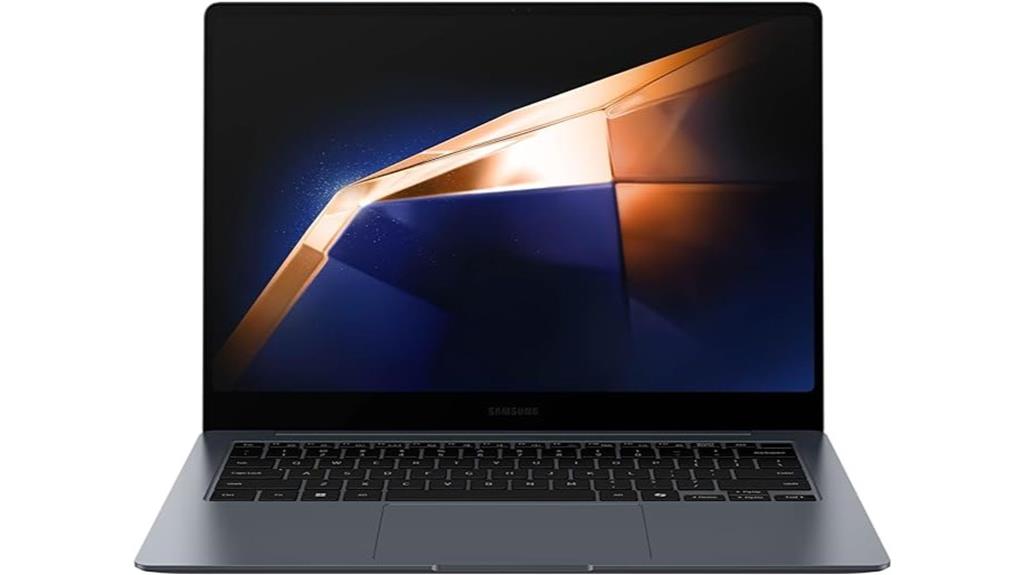
With its powerful Intel Core Ultra 7 processor and 32GB of RAM, the Samsung Galaxy Book4 Pro Business Laptop (NP944XGK-KG4US) is an excellent choice for data scientists who need robust performance for multitasking and complex computations. The stunning 14-inch 3K AMOLED touchscreen enhances your visual experience, while the lightweight design makes it easy to carry around. You’ll appreciate the extensive connectivity options, including Thunderbolt 4 ports and a MicroSD slot, for seamless integration with your devices. Plus, with eight hours of battery life and fast charging, this laptop keeps up with your demanding workflows without missing a beat.
Best For: Data scientists and professionals seeking a powerful, portable laptop with excellent multitasking capabilities and a high-quality display.
Pros:
- Exceptional performance with Intel Core Ultra 7 processor and 32GB of RAM for demanding tasks.
- Stunning 14-inch 3K AMOLED touchscreen for vibrant visuals and enhanced user experience.
- Lightweight and slim design for easy portability, making it ideal for on-the-go professionals.
Cons:
- High retail price of $1749 compared to competitors with better specifications.
- Limited RAM upgrade options in certain regions, maxing out at 16GB.
- Perceived low quality of OEM Western Digital SSD for the price point.
ALSO READ: Best Laptops for Data Scientists, Best Laptops for Financial Advisors, Best Laptop for Social Media Influencer, Best Laptop for Karaoke, Best Laptop for Running Solidworks, Best Laptop for Pen Testing, Best Laptop for Podcast Editing, Best Laptop for Recording Podcasts, Best Laptop for Researchers, Best Laptop for Multimedia
Factors to Consider When Choosing the Best Laptop for Data Science
When you’re choosing a laptop for data science, you need to think about several key factors. Processing power, memory capacity, and display quality are crucial for handling complex tasks efficiently. Don’t forget to consider battery life and connectivity options, as these can significantly impact your workflow.
Processing Power Requirements
Choosing the right processing power for your data science laptop can make a significant difference in your workflow and productivity. A powerful CPU, like a multi-core processor, is essential for tackling complex computations and data processing tasks. Additionally, a high-performance GPU optimized for AI and machine learning can drastically reduce training times for deep learning models. You’ll also want at least 16GB of RAM to effectively manage large datasets and run multiple applications simultaneously. Don’t overlook high-speed SSD storage for quick data access, which enhances efficiency in loading and processing tasks. Finally, consider integrated AI features in modern CPUs and GPUs, as they can further boost performance for specific data science applications and streamline your resource management.
Memory Capacity Considerations
Memory capacity is a crucial factor in your decision-making process for a data science laptop. You’ll want at least 16GB of RAM to efficiently handle large datasets and run multiple applications at once. If your work involves demanding tasks like machine learning or deep learning, consider opting for 32GB or more, as it can significantly boost performance and reduce processing time. Look for laptops with Unified Memory architectures, which enhance data access speeds for data-intensive applications. Insufficient RAM can lead to slower performance or even crashes during complex analyses. Lastly, think ahead about your future memory needs; upgrading RAM later may not always be feasible or cost-effective, so choose wisely from the start.
Display Quality Importance
While diving into data science, you’ll quickly realize that display quality plays a vital role in your workflow. A high-resolution display, like 3K or 4K, makes it easier to analyze intricate visual data and detailed graphs. You’ll appreciate the smoother scrolling and interaction from displays with higher refresh rates, such as 120Hz, which enhance your user experience during data manipulation. Features like HDR brightness and accurate color reproduction (100% DCI-P3 color gamut) ensure your data is represented precisely, aiding informed decision-making. Additionally, screens with anti-reflective coatings and touchscreen capabilities improve usability in various lighting conditions. Opting for a larger screen, 15 inches or more, gives you ample space for multitasking, allowing you to view multiple applications side by side efficiently.
Battery Life Expectations
Battery life is a critical factor to consider when selecting a laptop for data science, as you want to avoid interruptions during your analysis. Expect battery life to range from 8 to 18 hours, giving you the freedom to work without constantly searching for a power outlet. Opt for high-performance laptops with optimized battery management systems, as they can sustain heavy workloads while maintaining decent battery life. Fast charging capabilities are also a plus, reducing downtime between tasks. Pay attention to the processor’s power efficiency; newer chips often balance performance and energy use effectively. Finally, real-world battery performance can differ based on your usage patterns, so look for reviews that reflect actual conditions in data science work.
Connectivity Options Availability
When choosing a laptop for data science, connectivity options play a significant role in maximizing your productivity. Look for multiple USB ports, including both USB Type-C and USB-A, to connect various peripherals essential for your tasks. Thunderbolt 4 ports are a must for high-speed data transfers and connecting to external displays, which can really enhance your workflow when handling large datasets or complex visualizations. A microSD card reader is also handy for transferring data from cameras or other devices quickly. Ensure your laptop is compatible with Wi-Fi 6E for faster internet connections, crucial for accessing cloud-based tools in real-time. Lastly, built-in Bluetooth capabilities make it easy to connect wireless devices like mice and keyboards, streamlining your overall experience.
Portability and Weight
Choosing a laptop that balances portability and weight is essential for data science professionals who often work in various environments. Look for lightweight options around 2.5 to 3.5 lbs, making them easy to carry. A slim profile, ideally under 0.7 inches thick, enhances portability, allowing you to store it effortlessly in a backpack or briefcase. Battery life is crucial; aim for laptops that offer 8 to 18 hours of usage to support long work sessions without frequent charging. Additionally, consider compact designs with screen sizes between 12 to 15 inches, providing a good balance of usability and portability. A durable yet lightweight laptop can withstand travel demands while delivering the performance you need for data analysis tasks.
Price and Budget Constraints
Selecting the right laptop for data science often hinges on budget constraints and the total cost of ownership. Remember, it’s not just the purchase price you need to factor in; consider potential costs for software licenses, upgrades, and accessories. While a lower-priced laptop might save you money upfront, investing in a high-end model can enhance performance and longevity, ultimately offering better value. Focus on essential features like sufficient RAM, SSD storage for faster data access, and a capable GPU for machine learning tasks. These elements significantly impact your ability to handle large datasets. Lastly, always think about future scalability, as the demands of your data science projects will likely grow over time, necessitating more powerful hardware.
Frequently Asked Questions
What Is the Ideal RAM Size for Data Science Laptops?
For data science laptops, you’ll ideally want at least 16GB of RAM. This size allows you to run complex algorithms and analyze large datasets efficiently, ensuring smooth multitasking without significant slowdowns during intensive tasks.
How Important Is Battery Life for Data Science Work?
Battery life’s crucial for data science work, especially when you’re on the go. You need your laptop to last through long analysis sessions or meetings without constantly searching for an outlet. It keeps you productive.
Can I Use a Gaming Laptop for Data Science?
Yes, you can use a gaming laptop for data science. They often have powerful CPUs and GPUs, which can handle complex computations. Just ensure it meets your specific software requirements and has enough RAM for your tasks.
Are Touchscreen Laptops Beneficial for Data Science?
Touchscreen laptops can be beneficial for data science by enhancing interactivity and enabling intuitive navigation of complex visualizations. However, they might not be essential; traditional laptops often provide the performance you need for serious data analysis.
What Operating System Is Best for Data Science Tasks?
For data science tasks, Linux is often preferred due to its flexibility and powerful tools. However, Windows and macOS can work well too, depending on your specific software requirements and personal preferences. Choose what suits you best!
My Final Opinion
In choosing the best laptop for data science in 2025, you’ve got some fantastic options to consider. Whether you lean towards the powerful Apple MacBook Pro or the versatile Acer Swift X, each model offers unique features tailored for your needs. Keep performance, battery life, and portability in mind as you decide. With the right laptop, you’ll have the performance you can rely on to tackle your data science projects efficiently and effectively. Happy computing!
